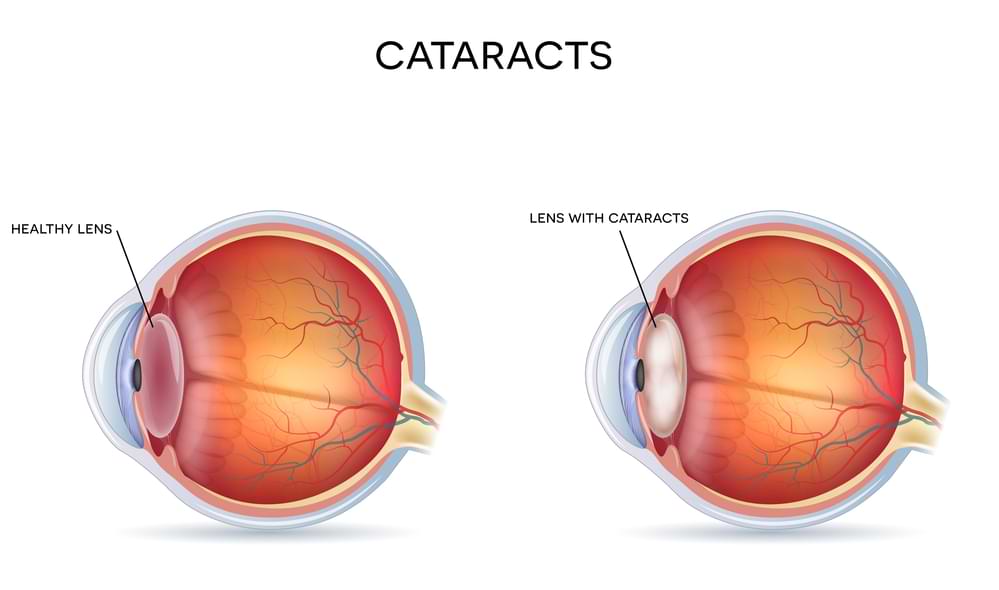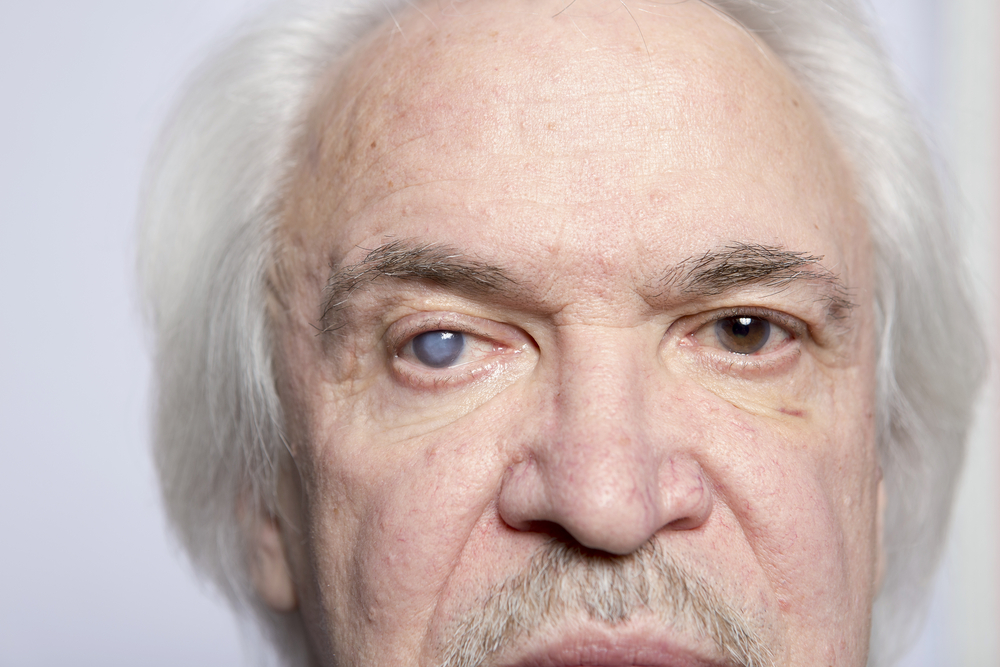Hobart Cataract Treatments That Are Changing Lives
Ever noticed a slight blur in your vision when reading the morning paper or spotting street signs? You’re not alone. In my many years at Martin’s Eyecare in Hobart, I’ve seen lots of patients who initially dismissed these signs as mere age-related changes.
But here’s something I’ve learned: addressing these changes early can make a world of difference to your eye health.
Cataract treatment in Hobart can effectively restore quality of life for those with impaired vision.
Take for example a patient of ours, a retired teacher from Glenorchy. He came to us worried about his fading vision, thinking it was just old age. It turned out to be early-stage cataracts. With timely assessment and management, this patient’s story became one of many successful journeys we’ve witnessed here.
Cataract symptoms are often brushed off as minor, but they shouldn’t be. According to the World Health Organization, cataracts contribute to more than 40% blindness cases. In our Hobart community, we’re working hard to change this narrative.
I’m Martin Robinson, owner and principal optometrist of Martin’s Eyecare, and together with my colleague Adam Barresi, we bring a wealth of experience in treating cataracts. Our journey has taken us from regional Australia to developing countries, where we’ve seen how crucial early intervention is.
If you’re noticing changes in your vision, or just want peace of mind about your eye health, don’t hesitate. Book an appointment with us to discuss cataract treatment options in Hobart. Let’s ensure your vision continues to let you enjoy all the beauty and experiences life has to offer.
Or if you’d just like to know more, keep reading.

Cataracts and Their Impact on Daily Life
Cataracts can introduce several challenges to everyday living, affecting various aspects of a person’s routine and quality of life. Some of the common challenges include:
- Reduced Visual Clarity: Cataracts cause clouding of the eye’s lens, leading to blurred or dimmed vision. This can make it difficult to see details clearly, affecting activities like reading, driving, or recognizing faces.
- Decreased Night Vision: People with cataracts often experience a significant decline in night vision. This can make it challenging to drive at night or move around in low-light conditions.
- Sensitivity to Light and Glare: Cataracts can increase sensitivity to bright light and glare, causing discomfort in sunny conditions or when facing bright lights. This can make outdoor activities or driving under bright lights uncomfortable.
- Difficulty with Color Perception: As cataracts progress, they can alter color perception, making colors appear faded or yellowish. This change can affect activities that rely on accurate color discrimination.
- Increased Risk of Falls and Accidents: The visual impairment caused by cataracts can lead to a higher risk of falls and accidents, especially in older adults, as it can be harder to see obstacles or uneven surfaces.
- Impact on Independence: As vision deteriorates, individuals with cataracts may find it harder to perform tasks independently, particularly those that require sharp vision, like driving, cooking, or managing medications.
- Social Withdrawal and Reduced Quality of Life: The combined effects of vision impairment can lead to decreased social interaction and participation in hobbies, contributing to feelings of isolation and reduced overall quality of life.
- Frequent Changes in Eyewear Prescriptions: As cataracts progress, the refractive error of the eyes can change, leading to the need for frequent updates in eyewear prescriptions.
- Hyperopic Eyes with Cataracts: In individuals who are hyperopic, cataracts can exacerbate existing vision challenges. The clouding of the lens may further blur the already compromised vision, making daily activities more difficult. Additionally, cataracts in hyperopic eyes can contribute to increased intraocular pressure, leading to headaches and an elevated risk of developing glaucoma.
It’s important for individuals experiencing these challenges to consult with an eye care professional for appropriate management and treatment options, which can significantly improve their quality of life.


Cataract Risk Factors
Before we talk more about cataract treatments here in Hobart, it’s important to understand the factors that can put us at risk. Knowing these can help us take proactive steps in our eye care routine.
- Age is a major contributing factor to cataracts. As we grow older, changes in our eyes naturally occur, and cataracts can be a part of this process. It’s a common misconception that only the elderly are affected, but the truth is, the risk increases as we age, starting around our 40s and 50s. This is why regular eye exams become even more crucial as we celebrate more birthdays.
- Diabetes is another significant risk factor. It increases the likelihood of developing cataracts, making it essential for those with diabetes to monitor their eye health closely. Managing blood sugar levels is not just about overall health; it’s directly linked to the health of your eyes.
- Obesity also contributes to the development of cataracts. Studies have shown that maintaining a healthy weight can reduce the risk. It’s another reason why a balanced diet and regular exercise are key components of a healthy lifestyle.
- High blood pressure isn’t just a concern for your heart; it affects your eyes too. It can impact the blood vessels in your eyes, leading to eye health issues, including cataracts. Regular check-ups with your GP and optometrist are important to keep both your blood pressure and eye health in check.
- Excessive sunlight exposure can damage the eyes over time. Wearing sunglasses with UV protection isn’t just a fashion statement; it’s a necessary shield for your eyes, especially in our “ozone-challenged” Tasmanian environment.
- Smoking is a well-known health risk, but did you know it also aggravates cataract formation? It’s yet another reason why quitting smoking is beneficial for your overall health, including your eyes.
- Previous eye surgery or an eye injury can lead to cataracts later on. It’s important to inform your optometrist about your eye history so we can provide the best care tailored to your needs.
- Certain medications, like steroids, can induce cataracts. If you’re on long-term medication, it’s a good idea to discuss the potential impacts on your eye health with your optometrist.
Remember, knowledge is power, especially when it comes to your eye health. Let’s work together to keep your vision clear and healthy.
Cataract Detection Techniques
At Martin’s Eyecare, early and accurate cataract detection is crucial for effective management:
- A Slit Lamp is a diagnostic tool we use for magnified examination of the eye’s structures, including the lens, to detect and assess cataracts.
- The Ophthalmoscope allows deep examination of the retina and lens, vital for comprehensive eye checks and cataract monitoring.
- Optical Coherence Tomography (OCT) provides detailed lens imaging, aiding in cataract identification and understanding their vision impact.
- Applanation Tonometry measures eye pressure, essential in cataract management and detecting other issues like glaucoma.
- Gonioscopy is employed to assess glaucoma risk in patients with cataracts by examining the angle between the iris and cornea.
- The Eidon UWF camera/confocal scanner helps view the retina through dense cataracts, ensuring continued retinal health monitoring.
With these advanced tools and expertise, our goal is to detect any signs of cataracts early, offering the best care and advice for your vision and eye health.
Cataract Treatment in Hobart: A Life-Changing Procedure
The decision to proceed with cataract surgery usually depends on how much the cataract is affecting your daily life. If you’re finding it difficult to read, drive, or see clearly in general, it might be time to consider surgery. We assess each case individually, considering your specific needs and lifestyle, to determine the best course of action.
So, what does cataract surgery involve? It’s a sophisticated yet straightforward procedure. The cloudy lens inside your eye is removed and replaced with a clear artificial lens, known as an intraocular lens (IOL). This surgery is typically performed on an outpatient basis and doesn’t require an overnight stay in the hospital.
The benefits of cataract surgery are immense. It can significantly improve your quality of life by restoring sharp, clear vision. Many of our patients express joy and relief at being able to return to their normal activities without the hindrance of blurred vision.
It’s also important to emphasize the safety and effectiveness of modern cataract surgery. With advancements in medical technology, cataract surgery has become one of the most successful and safe procedures in medicine today. The risks are minimal, and the success rates are high. Our role at Martin’s Eyecare is to guide you through this process, from the initial consultation and decision-making to post-surgery care and recovery.
Intraocular Lenses (IOLs): A New Vision for Cataract Patients
Intraocular Lenses, or IOLs, represent a significant leap forward in vision correction for cataract patients. At Martin’s Eyecare, we understand that each patient’s vision is unique, which is why we offer a range of IOL options to meet different needs and lifestyles.
- Fixed-focus Monofocal IOLs are the most traditional type. They’re designed to provide clear vision at one specific distance, typically set for distance vision. Patients often find they still need glasses for near tasks, like reading, but the clarity they experience for far-away objects can be remarkable.
- Accommodating-focus Monofocal IOLs take a step further. These lenses can shift slightly inside your eye, allowing for better focus across a range of distances. It’s a bit like having a lens that adjusts itself to provide clearer vision, whether you’re looking at something near or far.
- Multifocal IOLs are designed for those who want a broader range of clear vision, from near to far distances. These lenses have different zones set at different powers, which can reduce your dependence on glasses. It’s like having multiple glasses in one lens, providing clear vision for a variety of activities.
- Toric IOLs are a game-changers for those with astigmatism. These lenses are specifically designed to allow clear, sharp vision by compensating for the irregular shape of the cornea.
- EDOF (Extended Depth of Focus) IOLs are the latest advancement. These lenses provide a continuous range of vision from near to far distances, with a smoother transition between ranges. EDOF IOLs are particularly beneficial for those who wish to have a more natural range of vision without relying heavily on glasses.
If you would like to know more about the different lens options, I highly recommend watching the following video from American eye doctor Michele Lee.
Hobart Cataract Treatment Surgery: What to Expect
Before your operation, we focus on ensuring your eyes are in optimal condition. This includes prescribing special lubricant eye drops to enhance the tear film and ocular surface. Equally important is maintaining clean lids and lashes, as this contributes to the health of your eyes.
Also, please arrange for transportation on the day of your surgery, since you’ll be unable to drive immediately afterward.
Here’s what you can expect during the procedure from the perspective of the eye surgeon’s role.
- Consciousness: During cataract surgery, patients remain awake. The procedure is designed to be minimally invasive and typically quick, often completed in about 15 to 20 minutes per eye. Being awake might sound intimidating, but the process is quite routine.
- Relaxation Medication: The eye surgeon will administer medication to help you stay relaxed and comfortable. This isn’t intended to put you to sleep, but to ensure that you are calm and at ease throughout the procedure.
- Eye Dilation: Before the surgery begins, the surgeon will dilate your eye using special drops. This is an important step as it allows the surgeon to have better access to the lens of your eye.
- Local Anesthetic: To ensure you’re comfortable and pain-free during the surgery, a local anesthetic will be applied to numb the area around your eye. While you might feel some sensation or movement, it should not be painful.
- Natural Lens Removal: The core part of the surgery involves the removal of the clouded natural lens. The eye surgeon uses advanced techniques to carefully remove the lens, ensuring precision and minimizing any discomfort.
- Artificial Lens Placement: Following the removal of the natural lens, the surgeon will insert the artificial lens, or IOL. This lens is typically folded and inserted through a small incision, then unfolds automatically to fill the space in the eye.
- Lens Unfolding: One of the most remarkable aspects of modern IOLs is their ability to unfold automatically once in place. This process is a testament to the intricate design and skill involved in the cataract surgery process.
Post-Surgery
After your cataract surgery, the care you receive at Martin’s Eyecare is crucial for a smooth recovery and clear vision.
We’ll start with comprehensive post-operative care tailored just for you, including close monitoring of your recovery and managing any symptoms. Our goal is to ensure a comfortable and successful transition to your new vision.
Your follow-up care begins right after surgery, with the first check-up scheduled within a few days. These visits are key for monitoring your healing, adapting to the new lens, and identifying any complications. It’s also your chance to voice any concerns or questions.
We recognize that recovery varies for each patient, so we offer personalized support. This includes guidance on managing discomfort, what to expect during healing, and care instructions for your eyes post-surgery, like using prescribed eye drops and avoiding certain activities. Our focus is on your unique needs, providing professional advice every step of the way.
Most cataract surgeries are effective in restoring vision, with no complications. The following data illustrates this.
| Statistic | Description |
|---|---|
| 95% | Percentage of patients experiencing vision restoration with standard IOL placement during cataract surgery. |
| Over 3 million | Annual number of cataract surgeries performed in the United States. |
| 98% or higher | Overall success rate of cataract surgery procedures. |
| 99.5% | Percentage of patients reporting no significant complications after cataract surgery. |
| 0.1% | Risk percentage of intraocular lens dislocation 10 years post-surgery. |
| 0.7% | Risk percentage of intraocular lens dislocation 20 years post-surgery. |
| 1.7% | Risk percentage of intraocular lens dislocation 25 years post-surgery. |
| 1 in 3,000 surgeries | Incidence of retinal detachment post-cataract surgery. |
Table data from: https://www.penaeye.com/blog/2019/03/21/cataract-surgery-success-rates-and-197257
Conclusion
We understand how easy it can be to put off regular eye checkups, but doing so might mean missing early signs of conditions like cataracts.
Think of these checkups as your vision’s best friend – they’re there to catch any little changes before they become big problems. At Martin’s Eyecare, we’re committed to giving your eyes the care they deserve, with personalized assessments and a team that works hand-in-hand with skilled eye surgeons. We’re here to make sure nothing slips by unnoticed.
Your vision is one of your most incredible gifts, and we’re here to help you protect it.
If you need cataract treatment in Hobart, we’d love to be a part of your eye care journey!
